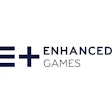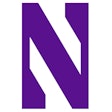When the #MeToo movement emerged last fall, it underscored the dangers uninvestigated workplace harassment claims can have on businesses. As the movement proved, any business in any industry is susceptible to harassment claims and subsequent workplace investigations, and the sports industry is no exception. The employment landscape has changed, and employers in the sports industry should take notice. Their next workplace investigation may be right around the corner.
How one takes shape
While there is no one-size-fits-all procedure for conducting investigations — and the public nature of investigations in sports can prove challenging — employers can expect the process to follow a certain pattern.
The first step is one of the most, if not the most, important decisions for employers in the investigative process: selecting an appropriate investigator. Regardless of whether the investigator is an in-house employee (human resources, in-house counsel) or a third-party (outside counsel), the individual should have zero conflicts of interest with or bias toward the complainant or accused. Someone who understands how to investigate, knows the law, can effectively communicate and, if necessary, confidently testify about the investigation should be selected.
Whether the investigation is being handled internally or through outside counsel, you can expect the investigation to begin promptly. How promptly depends on the circumstances, and courts have differed recently on what is considered “prompt.” One court held that an employer’s response was prompt when it began its investigation the day the complaint was made, conducted interviews within two days, and fired the accused within 10 days. Delaying an investigation in any way implies that the complaint is not being taken seriously.
Once the investigator is in place, they will begin interviewing witnesses. The investigator should start with the complainant and focus on limiting and clarifying the specific allegations. Next, they will go over the details of each alleged incident, asking what was said and by whom, who witnessed what, under what circumstances did the events occur, and what documents, if any, were exchanged. For each person interviewed, the investigator should determine whether the testimony is believable on its face and makes sense, whether the witnesses’ demeanors indicate they are being untruthful, whether a motive for lying exists, whether other evidence exists to corroborate the testimony, and whether the accused has a history of similar behavior.
The investigator acts in the capacity of a fact-finder, not as part of the employer’s HR, management or legal teams, and must reach a neutral, unbiased conclusion upon completion of the investigation. Any and all conclusions will be contained in a final written report, including a summary of any and all recommended actions the employer should take as a result of the investigation. The content of counsel’s communications and notes are generally protected by attorney-client privilege and the work product doctrine, but the report should be treated as discoverable evidence in case of a subsequent lawsuit.
Preparing for the next one
The first step toward preventing the next investigation is updating employee policies and handbooks. A clear anti-harassment policy — in compliance with applicable state and federal laws — addressing what is considered acceptable and non-acceptable behavior in the workplace should be created. Having a clear policy will help eliminate confusion among employees about what constitutes harassment and indicate that employees are valued and appreciated.
In the event of a workplace incident, the complainant should know to whom they should address their complaints. Reinforcing harassment reporting systems makes for a clear chain of command within your business and allows for the complaint process to be streamlined. Documentation is critical and should be done at every stage of the reporting process.
Finally, mandatory workplace harassment training for every employee — including managers — can help address the issue before it even arises. Regularly scheduled training sessions with a breakdown of your organization’s harassment policies ensures that employees remain apprised of current laws and what is and isn’t appropriate conduct.
In this day and age, it is imperative that all employers — especially those in sports — understand how to conduct adequate investigations into workplace-related incidents. Conducting these investigations is required by law and may decrease the value of lawsuits or prevent them altogether — which, in the highly publicized sports arena, can make all the difference.
Mark Jacobs ([email protected]) is a partner in the Irvine office of employment law firm Fisher Phillips. Adam Sloustcher ([email protected]) is an associate in the firm's San Diego office.




































